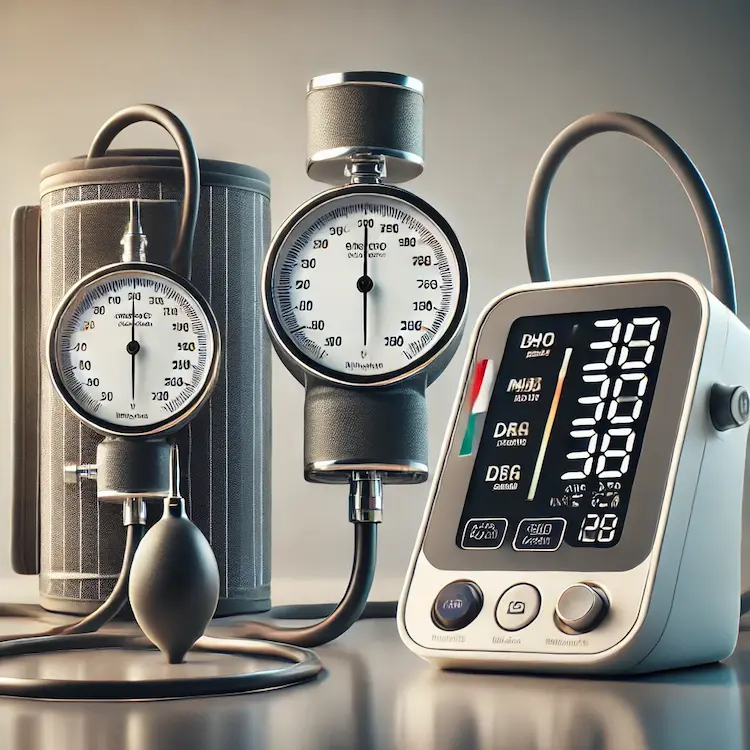Blood pressure monitoring is crucial during pregnancy, as conditions like preeclampsia and gestational hypertension can pose serious risks to both the mother and baby. A sphygmomanometer, commonly known as a blood pressure monitor, is one of the most widely used tools for tracking blood pressure levels. But how effective are sphygmomanometers in monitoring blood pressure during pregnancy? This article explores their reliability, compares different types of monitors, and provides practical guidance for expectant mothers.
Importance of Blood Pressure Monitoring During Pregnancy
Monitoring blood pressure during pregnancy is essential for detecting and managing conditions that could lead to severe complications. The two most common concerns include:
- Gestational Hypertension: High blood pressure that develops after 20 weeks of pregnancy without protein in the urine.
- Preeclampsia: A severe condition characterized by high blood pressure, proteinuria (protein in the urine), and organ dysfunction.
If left untreated, these conditions can lead to complications such as preterm birth, fetal growth restriction, and even maternal mortality. Regular monitoring with an accurate blood pressure device allows for early detection and timely medical intervention.
How Do Sphygmomanometers Work?
A sphygmomanometer measures arterial blood pressure using an inflatable cuff and a pressure gauge. The process typically involves:
- Inflation of the Cuff: The cuff wraps around the upper arm and inflates to temporarily stop blood flow.
- Gradual Deflation: As the air is released, the device records pressure changes.
- Blood Pressure Reading: Two values are obtained:
- Systolic Pressure (top number) – the force when the heart pumps.
- Diastolic Pressure (bottom number) – the force when the heart rests between beats.
Types of Sphygmomanometers and Their Effectiveness During Pregnancy
Different types of blood pressure monitors are available, each with its strengths and limitations when used during pregnancy.
Mercury Sphygmomanometer (Gold Standard for Accuracy)
- How It Works: Uses a column of mercury to measure pressure manually with a stethoscope.
- Pros: Highly accurate, used in clinical settings.
- Cons: Requires medical training, difficult for home use, and poses environmental concerns due to mercury.

Aneroid Sphygmomanometer (Manual, Mercury-Free Alternative)
- How It Works: Uses a mechanical dial instead of mercury for readings.
- Pros: Lightweight, mercury-free, affordable.
- Cons: Less accurate than mercury models, prone to user error, requires proper calibration.
Digital Automatic Blood Pressure Monitor (Common for Home Use)
- How It Works: Uses oscillometric technology with electronic sensors.
- Pros: Easy to use, no medical training required, stores past readings.
- Cons: May be less accurate than manual devices, susceptible to movement artifacts.
Comparison of Different Blood Pressure Monitors for Pregnancy
| Type | Accuracy | Ease of Use | Suitable for Home Use | Best for Pregnancy Monitoring |
|---|---|---|---|---|
| Mercury Sphygmomanometer | High | Difficult | No | Clinical settings |
| Aneroid Sphygmomanometer | Moderate | Moderate | No | Trained professionals |
| Digital Blood Pressure Monitor | Moderate to High | Easy | Yes | Home monitoring |
Accuracy and Reliability of Sphygmomanometers in Pregnancy
Pregnancy-related changes in blood circulation can sometimes affect blood pressure readings. Key factors influencing accuracy include:
- Cuff Size: Using an incorrectly sized cuff can lead to inaccurate readings. A larger cuff is often necessary for pregnant women with arm swelling.
- White Coat Syndrome: Some women experience higher readings at a doctor’s office due to stress. Home monitoring can help provide a more accurate assessment.
- Positioning and Movement: Digital monitors can give incorrect readings if the arm is not properly positioned or if there is excessive movement.
To improve accuracy:
- Use a validated monitor designed for pregnancy.
- Sit in a relaxed position with the arm at heart level.
- Take multiple readings at different times of the day.
Potential Health and Societal Impacts
Health Risks of Poor Blood Pressure Monitoring
If blood pressure is not adequately monitored, complications can arise, including:
- Increased risk of stroke and seizures (eclampsia).
- Preterm delivery or low birth weight due to restricted fetal growth.
- Need for early delivery or C-section if hypertension becomes severe.
Economic and Social Considerations
- Cost of Medical Care: Managing pregnancy-induced hypertension can be expensive, especially if hospitalization is required.
- Impact on Maternal Health: Poorly controlled blood pressure may lead to long-term cardiovascular issues in women.
- Home Monitoring Benefits: Affordable digital monitors allow expectant mothers to track their health without frequent hospital visits.
Practical Advice for Pregnant Women Using a Sphygmomanometer
If you are pregnant and monitoring blood pressure at home, follow these guidelines:
Choose the Right Monitor – Use a validated digital monitor approved for pregnancy.
Measure at the Same Time Daily – Consistency ensures reliable tracking.
Sit in a Quiet Environment – Avoid caffeine, stress, or movement before taking a reading.
Keep a Log – Record daily readings to share with your healthcare provider.
Seek Medical Help for High Readings – Contact your doctor if readings exceed 140/90 mmHg.
Conclusion
Sphygmomanometers are effective tools for monitoring blood pressure during pregnancy, especially when used correctly. While mercury sphygmomanometers remain the gold standard for accuracy, digital monitors offer convenience for home tracking. Regular monitoring can help detect hypertension early, reducing risks for both mother and baby. Expectant mothers should use clinically validated devices and follow best practices to ensure accurate readings.
Key Takeaways
- Blood pressure monitoring is essential in pregnancy to detect conditions like preeclampsia.
- Digital blood pressure monitors are the best option for home use.
- Using the correct cuff size and measuring consistently improves accuracy.
- Regular monitoring helps reduce pregnancy complications.
Actionable Recommendations
Use an FDA-approved digital sphygmomanometer for pregnancy.
Check blood pressure daily at the same time for consistency.
Keep a record of your readings and share them with your doctor.
Seek medical advice if blood pressure exceeds 140/90 mmHg.



